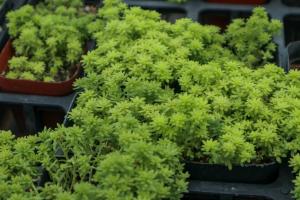Introduction
Planting trees is one of the most effective and efficient ways to combat climate change. Not only do trees absorb carbon dioxide from the atmosphere, but they also provide numerous environmental and social benefits. Mass planting of trees is an essential step towards restoring the planet's natural balance and creating a more environmentally sustainable future.
Choosing the Right Location
The first step in mass planting trees is choosing the right location. Trees thrive in areas with good soil, access to water, and sufficient sunlight. It's essential to consider the natural conditions of the site, such as wind patterns, drainage, and slope. Trees should be planted where they will have enough space to grow, and they should be surrounded by other native plants to create an ecosystem that will support their growth.
Selecting the Right Trees
Choosing the right species of trees is crucial in mass planting. Trees should be selected based on their adaptability to local conditions, their potential to provide ecosystem benefits, and their hardiness to local climate. Trees that are native to the region are often the best choice, as they are adapted to the local climate and will require less maintenance. The choice of species also depends on the purpose of the planting. For example, if the goal of the planting is to promote biodiversity, a mix of native species should be used.
Preparation
Preparation is essential when mass planting trees. The site should be cleared of any debris and prepared to create the optimal growing conditions for the trees. Soil should be tested for pH level and nutrient content, and any necessary amendments such as lime, fertilizer, or organic matter should be added. Trees should be planted in the correct season, typically in the early spring or fall when the soil temperature is conducive to root growth. Planting holes should be dug to the correct depth and width to ensure that the trees have enough space to grow.
Planting
When planting trees, it's essential to ensure that they are planted correctly. The root system should be carefully untangled, and any damaged or dead roots should be pruned. The tree should be planted at the correct depth, and the soil should be compacted around the root ball to eliminate air pockets. After planting, the tree should be watered well to ensure that the root ball is fully saturated. Mulch should be added around the base of the tree to conserve moisture and prevent weed growth.
Maintenance
Maintenance is critical in ensuring the success of mass planting trees. Newly planted trees require regular watering for the first few years until their root systems become established. Trees should be pruned regularly to remove damaged or diseased branches and create a strong structure. Pest and disease control measures should also be implemented to prevent damage to the trees. Additionally, planting trees involves an ongoing effort to manage competing vegetation and ensure the trees' survival.
Conclusion
Mass planting trees is one of the most potent and cost-effective tools in addressing climate change and restoring our planet's natural balance. However, the success of the planting effort depends on careful planning, suitable species selection, and proper planting and maintenance techniques. With these steps in mind, mass planting trees can be an effective way to create a greener, more sustainable future.

 how many times do yo...
how many times do yo... how many planted tre...
how many planted tre... how many pine trees ...
how many pine trees ... how many pecan trees...
how many pecan trees... how many plants comp...
how many plants comp... how many plants can ...
how many plants can ... how many plants and ...
how many plants and ... how many pepper plan...
how many pepper plan...































